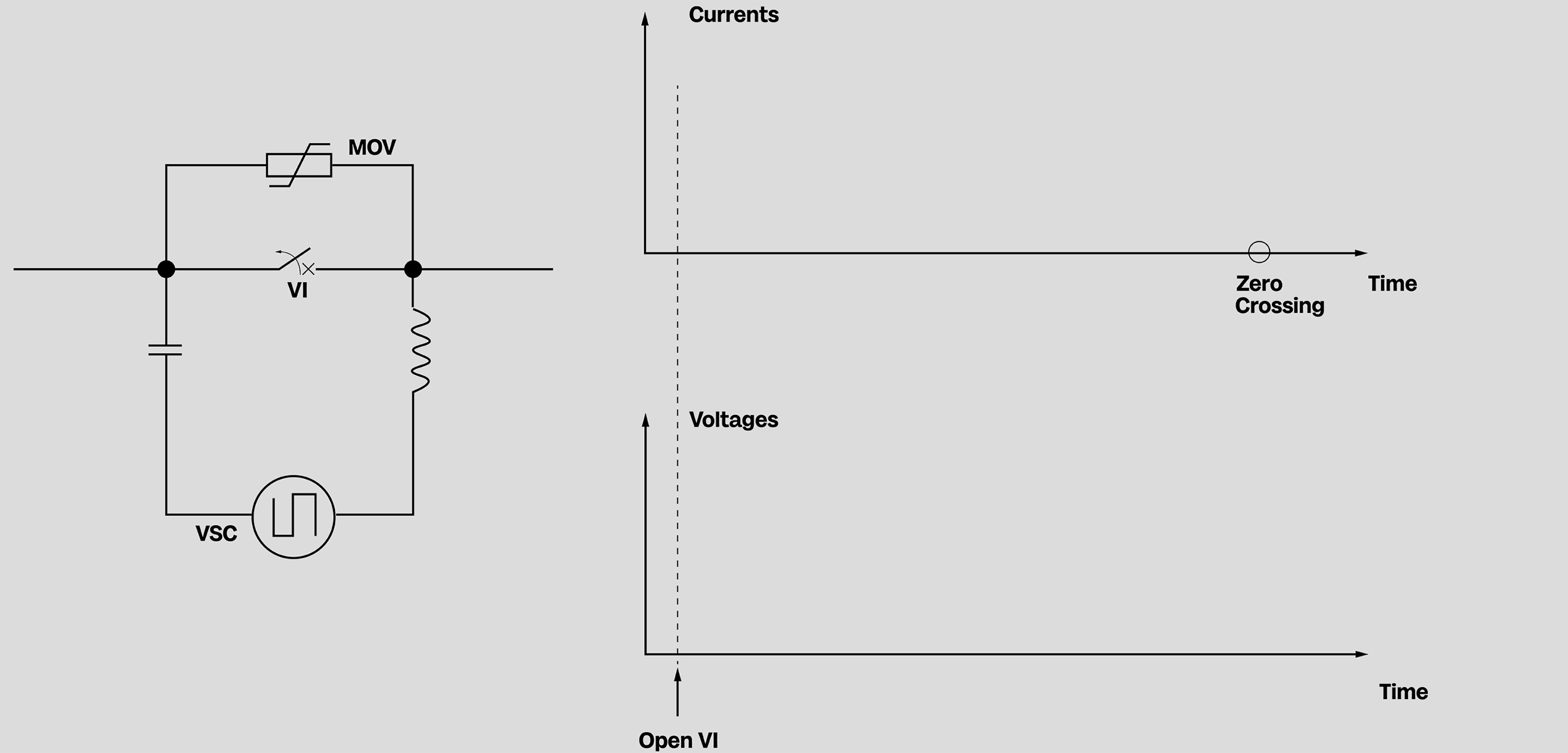Our circuit breaker technology is called the VSC Assisted Resonant Current (VARC) circuit breaker. It relies on a VSC (Voltage-Source Converter) which excites an oscillation in an LC-circuit.
The time to achieve a sufficient gap between the mechanical contacts in the VI is at least one millisecond even if a very fast-acting actuator is utilized. The semiconductors, on the other hand, easily can be operated at a frequency of 10 kHz or higher. Therefore, the semiconductors can easily switch many times during the time needed to achieve the necessary separation of the mechanical contacts.

In the method, which is used by Scibreak to create a current pulse with sufficient amplitude, a small number of semiconductors operate repetitively (during approximately 0.5 ms) rather than a large number of semiconductors operating simultaneously only one time in the breaking operation. In this way an improved utilization of the semiconductors can been reached, and the needed number of semiconductors has been reduced. The reduction factor may be more than one order of magnitude.
To radically increase the share of renewables in the energy system, power transmission grids with more capacity and wider reach are needed. These grids also need circuit breakers to ensure functionality and reliability. Scibreak’s technology greatly reduces the costs of circuit breakers, enabling the sustainable Supergrid of the future.

Future power transmission grids with more capacity and wider reach are needed. These grids also need circuit breakers to ensure functionality and reliability.